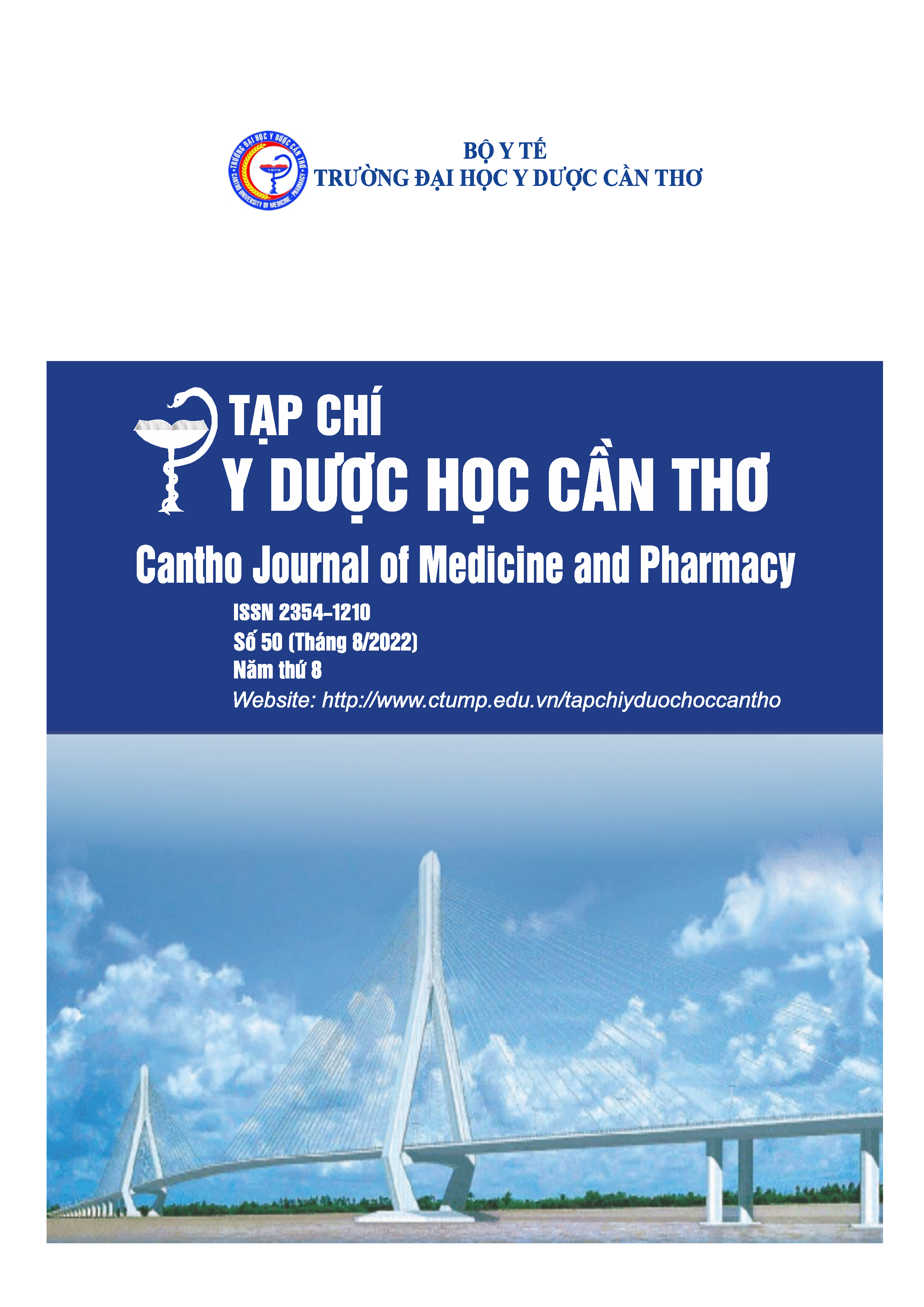SURVEY THE RESULTS OF TARGET CONTROL OF SERUM LDL-c CONCENTRATION IN CHRONIC CORONARY SYNDROME PATIENTS TREATED WITH ROSUVASTATIN 10MG AT CAN THO CARDIOVASCULAR HOSPITAL IN 2021-2022
Main Article Content
Abstract
Background: Dyslipidemia is a common cardiovascular risk factor in clinical practice, increasing dangerous cardiovascular complications.Rosuvastatin is a statin commonly recommended for use in many countries worldwide. For a better assessment of the hypolipideic effects of the blood, especially LDL-c of rosuvastatin medium content and the safety of the drug in patients with chronic coronary syndrome (CCS) is necessary. Objectives: To determine the rate of serum LDL-c goal failure and investigate the factors associated with the serum LDL-c target failure rate in patients with chronic coronary syndrome treated with rosuvastatin 10mg ≥4 weeks. Materials and methods: A cross-sectional study on 206 patients diagnosed with CCS treated with rosuvastatin 10mg ≥4 weeks at Can Tho Cardiovascular Hospital from April 2021 to March 2022. Results: The percentage of patients who did not reach the target LDL-c concentration <1.8mmol/l accounted for 68.4%. Female gender, BMI, overweight and obesity, and physical inactivity were associated with the rate of not reaching the target LDL-c concentration <1.8mmol/l (p<0.05). Conclusions: The proportion of patients who did not match the target of LDL-c concentration <1.8mmol/l accounted for 68.4%. Female gender, BMI, overweight and obesity, and physical inactivity were associated with the rate of not reaching the target LDL-c concentration <1.8 mmol/l.
Article Details
Keywords
Chronic coronary syndrome, LDL-c concentration, dyslipidemia, rosuvastatin
References
2. Võ Thị Thùy An (2019), “Nghiên cứu tình hình và đánh giá kết quả kiểm soát rối loạn LDL-c bằng atorvastatin kết hợp ezetimibe ở bệnh nhân hội chứng mạch vành cấp tại Bệnh viện Đa khoa Trung ương Cần Thơ năm 2018-2019”, Luận văn bác sĩ chuyên khoa cấp II, Trường Đại học Y Dược Cần Thơ, Cần Thơ.
3. Phạm Thanh Bình (2016), “Đặc điểm lâm sàng, cận lâm sàng và đánh giá kết quả điều trị bằng rosuvastatin trong kiểm soát LDL-c ở bệnh nhân bệnh ĐMV tại Bệnh viện Đa khoa Trung ương Cần Thơ”, Luận văn bác sĩ chuyên khoa cấp II, Trường Đại học Y Dược Cần Thơ, Cần Thơ.
4. Bộ Y Tế (2020), Quyết định về việc ban hành tài liệu chuyên môn thực hành chẩn đoán và điều trị bệnh ĐMV, Quyết định số 5332/QĐ-BYT ngày 23 tháng 12 năm 2020.
5. Nguyễn Thị Thanh Hậu (2017), “Nghiên cứu rối loạn lipid máu và kết quả kiểm soát LDL-c bằng ezetimide kết hợp statin ở bệnh nhân hội chứng mạch vành cấp tại Bệnh viện Đa khoa Trung ương Cần Thơ”, Luận văn bác sĩ chuyên khoa cấp II, Trường Đại học Y Dược Cần Thơ, Cần Thơ.
6. Hội Tim mạch học Việt Nam (2015), Khuyến cáo của Hội Tim mạch học Việt Nam về chẩn đoán và điều trị rối loạn lipid máu năm 2015.
8. Hội Tim mạch học Việt Nam (2018), Khuyến cáo của Hội Tim mạch học Việt Nam về chẩn đoán và điều trị tăng huyết áp năm 2018.
9. Dương Hoàng Vũ (2018), “Nghiên cứu đặc điểm rối loạn lipid máu và kết quả kiểm soát LDL-c bằng simvastatin kết hợp ezetimibe trên bệnh nhân bệnh ĐMV tại Bệnh viện Tim mạch Cần Thơ năm 2017-2018”, Luận văn bác sĩ chuyên khoa cấp II, Trường Đại học Y Dược Cần Thơ, Cần Thơ.
10.Cannon CP, Giugliano RP, Blazing MA, et al. (2008), “Rationale and design of IMPROVE-IT(IMPRroved Reduction of Outcomes: Vytorin Efficacy International Trial): comparison of ezetimibe/simvastatin versus simvastatin monotherapy on cardiovascular outcomes in patients with acute coronary syndromes”, Am Heart J, 156(5), pp.826-832.
11.François Mach, Colin Baigen et al. (2019), “ESC/EAS Guidelines for the management of dyslipidaemias: lipid modification to reduce cardiovascular risk: The Task Force for the management of dyslipidaemias of the European Society of Cardiology (ESC) and European Atherosclerosis Society (EAS) Atherosclerosis Society (EAS)”, European Heart Journal, 41(1), pp.111-88.


